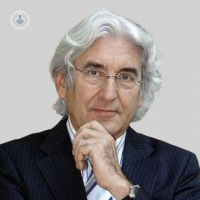Pectus Excavatum y Pectus Carinatum, deformidades torácicas corregibles
Written by:They are the most frequent deformities of the chest wall, usually little known and produced by the anomalous growth of the costal cartilages that modify the position of the sternum, which produce a depression (excavatum) or an elevation (carinatum) of the same.
According to experts in Thoracic Surgery , in the pectus excavatum, the sternum sinks towards the spine more or less symmetrically and affects approximately 0.1% of the population, preferably male.
It presents initially in the first decade of life but usually becomes more evident at puberty, when, in addition, occasionally causes psychological problems that especially affect the social behavior of adolescents. Although it is a mostly aesthetic problem, the heart is displaced to the left and may present a decrease in lung capacity, a certain degree of scoliosis, and is sometimes associated with syndromes that link it to other malformations, such as the syndrome Of Marfan.

It is very important to do a complete study before deciding whether it is a surgical case and the type of surgery needed. Currently, most cases are involved with a minimally invasive technique (Nuss technique), which consists essentially of placing a retrosternal metallic prosthesis that is fixed on the side of the ribs or taulinoplasty that places a prosthetic prosthesis. Although sometimes we can use non-surgical procedures and in others it is necessary to practice open surgery with resection of abnormal cartilages, everything will depend on the radiological clinical study and the individualized evaluation of each patient.
In the pectus carinatum the sternal deformity is protusive. This disorder has a high familial incidence and may be associated with scoliosis and other more complex syndromes. The extent and shape of the malformation can be very varied. The most common are those that deform the lower part of the sternum and the parasternal cartilage, the chondromanubrial that affects the upper part of the sternum and adjacent ribs and the asymmetric ones. The treatment can be non-surgical in mild cases and surgical resection, with different techniques, in all other cases.
It is advisable to consult these deformities early because they can occasionally influence their development and make it easier for therapeutic decisions to be made at the most appropriate time.
Having experience in all these techniques is fundamental when deciding in an individualized way the best method of correction that achieves the highest satisfaction of patients with the results obtained



